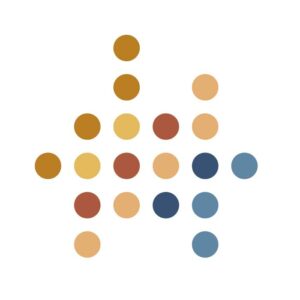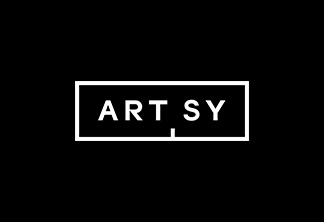Including DEI in a mission statement or achieving a “best places to work” designation is not enough—truly inclusive and high-performing companies must be built through intentional efforts. Diversity, equity, and inclusion (DEI) training plays a crucial role in this process, offering educational programs designed to foster more inclusive work environments. These programs equip leaders, teams, and individual contributors with the skills to recognize and appreciate differences, ensure fair treatment and equal opportunities, and amplify every voice for effective decision-making.
When implemented successfully, DEI programs can enhance innovation, improve cultural competence, increase employee satisfaction, and drive better business outcomes. Training helps companies achieve these results and improve day-to-day workplace life.
Benefits of DEI Training
DEI training gives employees the skills to create a more inclusive workplace. It’s an effective tool for cultivating a safe and productive work environment that respects diverse perspectives, promotes equality, and encourages participation in culture building.
Integrating inclusion and belonging topics into your company’s training programs helps unlock the benefits of investing in DEI, delivering advantages like increased creative potential, enhanced employee engagement, and better overall performance.
- Improved office culture: Cultivating an environment where all feel welcome leads to a more positive workplace culture. Diversity training can eliminate knowledge gaps and improve business practices, enabling everyone to give and receive support.
- Greater employee satisfaction: When individuals feel respected and included, job satisfaction levels rise and attrition falls.
- Better team performance: Inclusive teams often outperform their less-inclusive counterparts. Experts attribute this to the influence of broader perspectives and more confidence in sharing ideas.
- Enhanced innovative thinking: Encouraging varied viewpoints can lead to more creative solutions and improved decision-making.
- Improved financial performance: Studies show that companies that promote DEI practices see better financial outcomes.
Types of DEI Training
DEI training programs cover topics designed to promote inclusive workplace policies and behaviors. These programs often include everything from unconscious bias training and microaggression awareness to inclusive leadership development, allyship, anti-racism, and anti-harassment strategies.
Businesses looking to prioritize relevant DEI initiatives often start by assessing current company efforts to identify specific areas of need. When organizations identify DEI training topics that align with their goals, it’s easier to set clear objectives and tailor training programs to achieve them.
Since selecting inclusion training topics based on targeted DEI goals is key to realizing DEI’s benefits, it’s smart to begin by understanding the types of DEI training available.
Managing Unconscious Bias
Unconscious bias refers to the mental “shortcuts,” preconceptions, or stereotypes individuals may hold toward groups of people without conscious knowledge. These biases can subtly influence decisions and actions, shaping workplace experiences in ways that may exclude or disadvantage others.
Managing unconscious bias is foundational to creating inclusive workplaces. It helps break down barriers and aids team members in recognizing when unintended bias may be at play. Unconscious bias training gives employees the skills to understand, recognize, and manage those mental shortcuts caused by bias, ensuring a fairer culture and more inclusive leadership decisions.
Anti-Discrimination
Anti-discrimination practices are intended to prevent prejudice or unfair treatment based on race, gender, gender identity, age, religion, sexual orientation, disability, or other defining characteristics an individual cannot and should not be asked to change.
Anti-discrimination policies and training are important parts of building an inclusive workplace. They help employees recognize and eliminate discrimination, create a culture of respect and empathy, and encourage diversity of thought and experience.
Inclusive Leadership
Inclusive leadership training empowers leaders to implement practices that promote inclusivity and belonging in their teams. By understanding and respecting diversity in their teams, leaders can act as the driving force for company-wide inclusion.
Inclusive leadership training programs help leaders implement more inclusive practices in hiring and performance management, leading to better engagement, cohesion, and innovation.
Recognizing Microaggressions
Microaggressions are subtle, often unintentional, behaviors and actions that belittle or exclude marginalized or underrepresented groups. These incidents cumulatively impact the well-being, confidence, and psychological safety of those targeted. Unaddressed microaggressions may fly under the organizational radar, but their effects can cause team members to disconnect from their company and coworkers.
Microaggression training equips employees with the awareness and skills to recognize and avoid subtle discriminatory behaviors. Training helps teams build respect and empathy, minimize the occurrence of microaggressions, and mitigate detrimental second-order effects like decreased morale and employee turnover.
Allyship
Allyship training is pivotal for fostering a diverse and inclusive workplace. It teaches individuals how to act as allies by supporting and advocating for marginalized or underrepresented groups.
By recognizing the burden of those experiencing discrimination, employees can contribute to a culture of inclusivity. Allyship training emphasizes active listening, understanding privilege, and taking actionable steps toward equality to strengthen organizational cohesion and promote a truly diverse environment.
LGBTQIA+ Inclusion
Supporting those in the LGBTQIA+ community is a facet of allyship meant to create more welcoming and inclusive spaces for all. It goes beyond basic awareness, empowering individuals with the knowledge and tools to actively support their LGBTQIA+ colleagues and practice intervention in instances of discrimination or implicit bias.
Disability Awareness
Disability awareness training helps teams cultivate an accessible and supportive workplace. By increasing understanding of visible and invisible disabilities, disability-inclusive practices, and ADA accommodations, companies promote empathy. This type of training fosters a more inclusive environment where everyone’s abilities are recognized and valued, driving positive cultural shifts within organizations.
How To Effectively Implement DEI Training
Diversity programs and policies around inclusion and belonging are crucial for creating a workplace where every contributor and leader strives for greater cohesion and diversity. By following certain DEIB training best practices, organizations can implement more effective diversity programs.
- Secure leadership buy-in to ensure the long-term success of DEI. Leaders set the tone for organizational culture and allocate resources toward DEI initiatives.
- Take a continuous learning approach that focuses on ongoing learning journeys rather than one-off “check-the-box” trainings that will not be effective.
- Get expert support to tailor strategies to your company’s unique organizational challenges. Advice from a trusted partner can help create meaningful and lasting improvements.
- Measure impact to see how effective the training actually was.
How To Measure the Impact of DEI Training
Measurement is a key aspect of understanding the effectiveness of initiatives, as it helps highlight areas of success and aids leaders in identifying future program needs. Using metrics, qualitative insights, and employee feedback, organizations can gain a comprehensive view of DEI training outcomes and the results of various inclusivity strategies, allowing for more targeted and effective efforts.
Pre- and Post-Training Feedback
Use pre- and post-training surveys to understand if a specific training drove impact. In these surveys, ask the same set of questions before and after training to see if answers and behaviors change. For example, before and after a Managing Unconscious Bias training, you might ask if a person understands the concept of unconscious bias and how it affects their work.
DEI Program Participation Rates
Measuring enrollment and completion rates is an effective way to evaluate employee engagement in learning programs. By analyzing these metrics, organizations can also learn which programs resonate most with employees and ensure that all staff have opportunities to participate.
Company Retention Rates Across Demographics
Tracking retention rates across various demographic categories can help identify potential disparities or weak spots in retention efforts.
By analyzing retention data, organizations can gain valuable insights into whether training and overall culture programs are creating a more inclusive environment or if certain groups are still facing challenges. If turnover isn’t being caused by other factors, increasing attrition may be a sign that more inclusivity work is needed.
Promotion and Advancement Metrics
Analyzing promotion rates across various demographic groups before and after the implementation of inclusion practices can help evaluate program effectiveness. Insights from these performance management metrics can aid career pathing and address potential disparities within hiring, retention, and promotion practices.
Employee Resource Group (ERG) Engagement
Measuring the activity levels, growth, and overall impact of employee resource groups (ERGs) provides valuable insights into these groups’ effectiveness. This metric can also serve as an indicator of the success of diversity engagement initiatives.
Industry Benchmarking
Comparing organizational DEI metrics against industry averages or established best practices is a valuable way to evaluate progress and pinpoint areas needing improvement. Benchmarking helps organizations see how they measure up to peers, uncover gaps in inclusion initiatives, and develop targeted strategies to foster a more inclusive and equitable workplace.
How Paradigm Approaches DEI Training
Paradigm offers a comprehensive platform that helps companies evaluate their current programs, create tailor-made plans for goals and desired improvements, and deliver impactful training and resources to become more inclusive. Employee surveys further highlight the state of inclusion and diversity directly from the opinions that matter most.
When developing a diversity training plan, Paradigm uses your company’s data and insights to understand your organization’s level of maturity and move the needle using the right strategies and tools. The platform offers live, virtual, or in-person training to support employees, teams, hiring managers, and leaders. Paradigm blends on-demand video-based training, virtual events, and live workshops to deliver high-quality education on the topics that matter most to your team.
To explore how Paradigm can help you select effective DEIB training and the tools to measure your results, talk to an expert today.

 Our website uses cookies to distinguish you from other users of our website. This helps us to provide you with a good experience when you browse our website and also allows us to
improve our site. By continuing to browse our website, you’re agreeing to our use of cookies. For more information, please read our
Our website uses cookies to distinguish you from other users of our website. This helps us to provide you with a good experience when you browse our website and also allows us to
improve our site. By continuing to browse our website, you’re agreeing to our use of cookies. For more information, please read our




